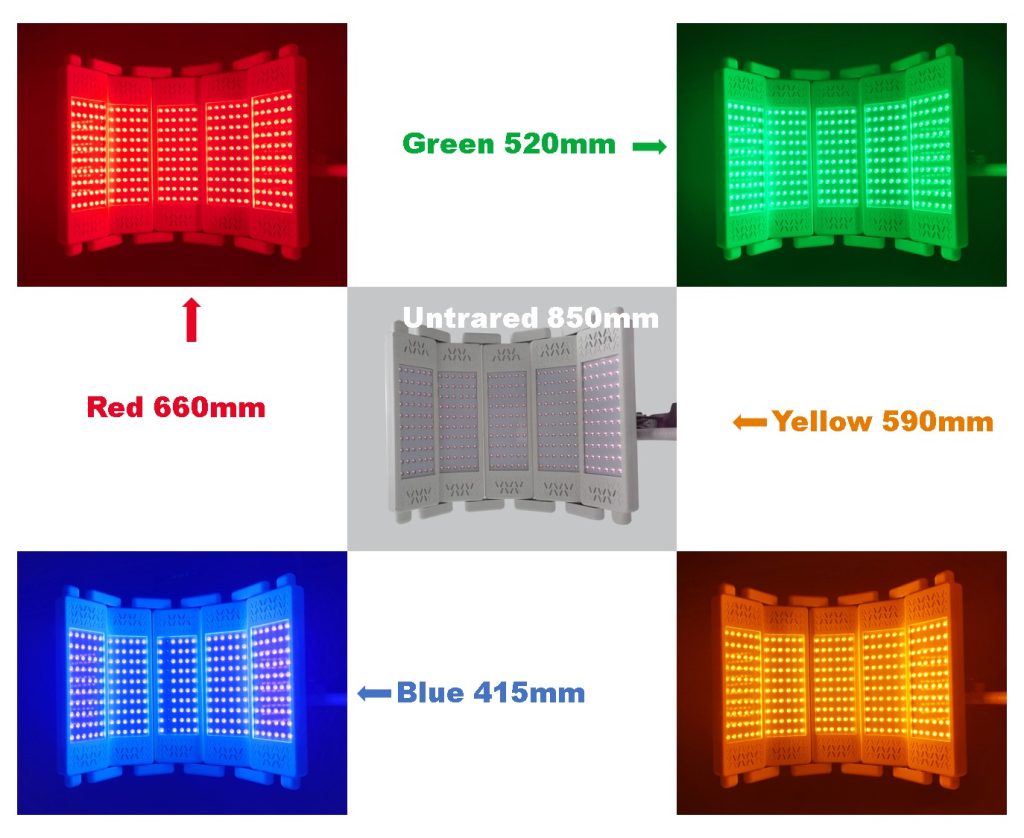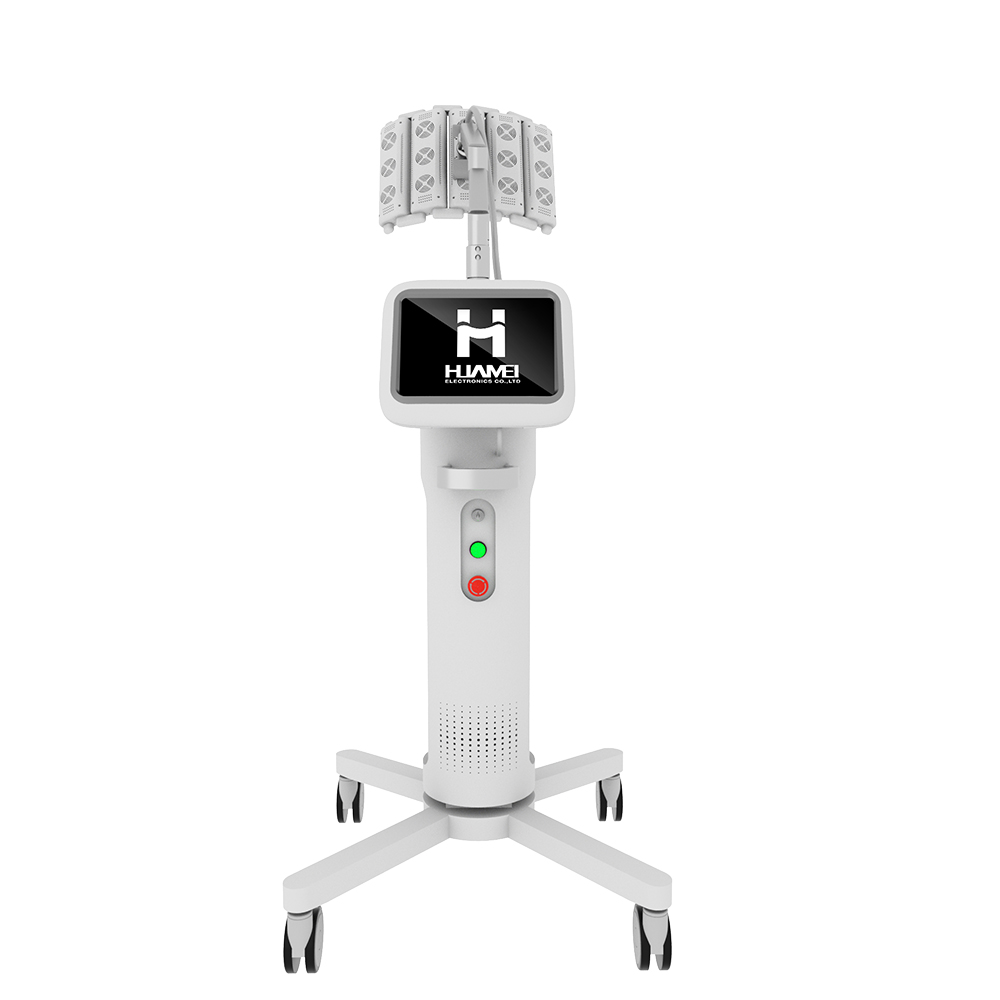The Comprehensive Benefits of IPL Machines: A Game-Changer in Hair Removal and Skin Rejuvenation
January 13, 2026Application of PDT (Photodynamic Therapy) equipment
October 11,2024
PDT (Photodynamic Therapy) beauty equipment is a technique that combines photosensitizers and specific wavelengths of light to treat various skin issues, particularly acne, skin aging, and photodamage. This non-invasive, safe, and effective technology has become a popular treatment in beauty salons and dermatology clinics. Below is a detailed explanation of the principle, applications in beauty salons, advantages, and precautions of PDT beauty equipment.

The Principle of PDT Beauty Equipment
The core principle of PDT beauty equipment is the interaction between a photosensitizer and a specific wavelength of light, leading to a photodynamic reaction. The process can be described as follows:
- Application of Photosensitizers: In PDT therapy, a photosensitizer is first applied or injected into the targeted skin area. Photosensitizers are substances that can be activated by specific wavelengths of light. Once absorbed into the skin, these substances undergo a chemical reaction when exposed to light.
- Light Exposure: Specific wavelengths of light (such as blue, red, or near-infrared light) are then used to irradiate the skin area treated with the photosensitizer. The wavelength of the light typically ranges between 400-700nm, with different wavelengths suitable for different skin issues. When activated by the light source, the photosensitizer triggers a photodynamic reaction that generates reactive oxygen species (ROS), which can destroy abnormal cells or bacteria.
- Cell Destruction or Function Regulation: The result of the photodynamic reaction leads to the destruction of cellular membranes, mitochondria, and other structures, causing apoptosis or inhibiting abnormal cell proliferation. For acne treatment, PDT can kill acne-causing Propionibacterium acnes and reduce inflammation. Additionally, PDT promotes collagen production, reduces pigmentation, and improves photodamage in the skin.
Applications of PDT Beauty Equipment in Beauty Salons
- Acne Treatment: One of the most common uses of PDT in beauty salons is to treat moderate to severe acne. The photosensitizer, usually 5-aminolevulinic acid (ALA), is absorbed by Propionibacterium acnes. Blue or red light is then used to trigger the photodynamic reaction, effectively killing the bacteria and reducing sebaceous gland activity, thus alleviating acne formation.
- Anti-Aging Treatments: The red light wavelength used in PDT (approximately 630nm) can penetrate deep into the dermis layer, stimulating fibroblasts and promoting collagen production, thereby enhancing skin elasticity and firmness. This anti-aging effect makes PDT a popular treatment in beauty salons for reducing fine lines, wrinkles, and sagging skin.
- Treatment of Pigmentation and Dark Spots: PDT is also effective in treating various pigmentary conditions, such as melasma, age spots, and sun spots. The combination of photosensitizers and specific wavelengths of light can selectively destroy melanocytes, reducing the appearance of dark spots.
- Skin Repair and Photodamage Treatment: For clients with sun damage or other types of photodamage, PDT therapy can effectively repair structural damage in the skin, restoring a healthier texture and tone. Moreover, PDT can alleviate issues like capillary dilation, erythema, and other skin problems caused by photodamage.
- Post-Treatment Care and Skin Maintenance: PDT can also be used for post-treatment skin repair and conditioning. By regulating sebum production and accelerating cell turnover, it helps the skin maintain a healthy state. PDT is also suitable for clients with sensitive skin or those requiring long-term skin care after cosmetic procedures.

Advantages of PDT Beauty Equipment
- Non-Invasive and Non-Traumatic: One of the key advantages of PDT is that it is a non-invasive treatment method, requiring no incisions or injections. Clients experience little to no discomfort during the procedure. Post-treatment, there is no significant trauma to the skin, and recovery time is minimal.
- Versatility: PDT can treat a range of skin issues, including acne, skin texture improvement, pigmentation, and other aging-related concerns. This versatility makes it a commonly used skin treatment in beauty salons.
- Noticeable and Long-Lasting Results: PDT therapy often produces significant results after a few sessions, especially for acne and pigmentation treatment. With proper maintenance, the effects can last for several months or longer.
- Personalized Treatment Plans: The wavelength of light, exposure time, and type of photosensitizer can all be adjusted according to the client’s specific skin conditions, allowing for highly personalized treatment plans. This flexibility enables PDT to address a wide variety of skin problems and meet the needs of different clients.
- High Safety: Since PDT mainly targets abnormal cells or bacteria, normal skin tissues are barely affected, making side effects minimal. After years of clinical research, PDT has been proven to be a safe and reliable method for treating skin conditions.
Precautions for PDT Beauty Equipment
- Photosensitizer Selection and Allergic Reactions: Careful selection of the appropriate photosensitizer for each client’s skin type is essential, and an allergy test should be performed beforehand. Some clients may be allergic to certain photosensitizer components, which can cause redness, swelling, stinging, or itching in the treated area.
- Pre- and Post-Treatment Sun Protection: Since PDT involves light exposure, the skin becomes more sensitive to sunlight after the treatment. Clients should avoid sun exposure for several days post-treatment and use adequate sun protection, such as high-SPF sunscreen, to prevent further damage.
- Mild Side Effects Post-Treatment: While PDT is a safe therapy, some clients may experience temporary redness, swelling, or dryness in the treated area. These symptoms typically subside within a few hours to days. It’s important to advise clients to keep the skin moisturized and follow appropriate aftercare instructions.
- Suitability of Treatment Candidates: Not everyone is a suitable candidate for PDT therapy. Clients with photosensitivity, pregnant women, or those with severe skin diseases should avoid PDT treatment. Additionally, clients taking photosensitizing medications (such as antibiotics or anti-inflammatory drugs) should also refrain from PDT.
- Treatment Frequency and Cycles: PDT treatments are usually conducted in stages, with a gap of 1-2 weeks between each session. A full course of treatment may require 3-6 sessions, depending on the client’s skin condition and recovery rate. Clients should avoid over-treating their skin to prevent unnecessary stress or damage.


Conclusion
As an advanced photodynamic therapy, PDT beauty equipment combines photosensitizers with specific wavelengths of light to address various skin issues effectively. Its non-invasive, non-traumatic, and highly safe nature makes it widely popular in beauty salons, particularly for treating acne, anti-aging, pigmentation, and photodamage. For beauty salons, PDT equipment offers multi-functional skin care solutions and helps clients achieve long-lasting skin improvements.